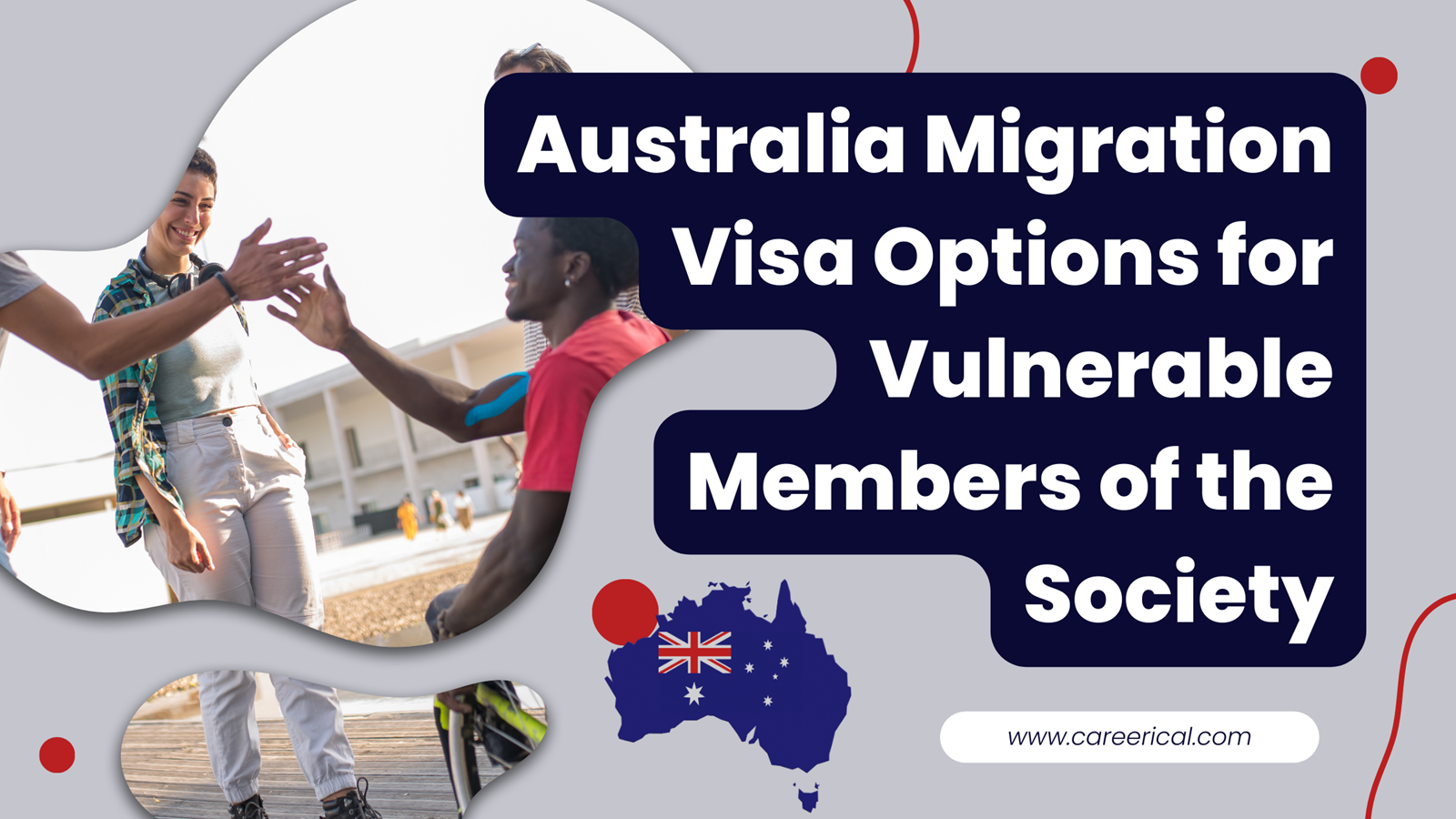🇦🇺 Australia Migration Visa Options for Vulnerable Members of the Society in 2024
Australia stands as a beacon of hope for many around the world, offering sanctuary and opportunities to those in dire need. Recognizing the challenges faced by vulnerable individuals and families, the Australian government has established several migration visa options tailored to their unique circumstances.
This detailed guide delves into these options, providing a roadmap for those seeking safety, freedom, and a chance for a new beginning.
Understanding Your Options
Refuge and Humanitarian Visas
Protection Visa (Subclass 866)
Eligibility: You must be in Australia to apply and prove that returning to your home country would result in substantial harm.
Benefits: This visa allows you to live, work, and study in Australia permanently. You can also sponsor eligible relatives for permanent residency and apply for Australian citizenship.
Application Process: Applications are submitted through the Australian Department of Home Affairs website, including detailed documentation of your claim for protection.
Refugee Visa (Subclass 200)
Eligibility: You must be outside Australia, typically referred by the UNHCR, and facing persecution in your home country.
Benefits: Offers permanent residency, the right to work and study, and access to social security.
Application Process: This visa requires a referral from UNHCR to the Australian government. Applicants cannot apply directly but must be nominated by UNHCR.
Global Special Humanitarian Program (Subclass 202)
Eligibility: For those outside their home country facing substantial discrimination amounting to a gross violation of human rights.
Benefits: Similar to the Refugee Visa, including access to employment, education, and social services.
Application Process: Requires a proposer in Australia who can provide support during your initial period in the country. Applications are submitted through the proposer to the Department of Home Affairs.
Recommended: 🇨🇦 New Canada Visa Pathway 2024: Quebec Opens Doors to Skilled Workers in Key Sectors
Family and Partner Visas
Child Visa (Subclass 101)
Eligibility: Children outside Australia with a parent who is an Australian citizen, permanent resident, or eligible New Zealand citizen.
Benefits: Permanent residency, access to education and health care.
Application Process: Must be sponsored by their parent or their parent’s partner. Includes submitting evidence of the relationship and meeting health and character requirements.
Partner Visa (Subclasses 820 and 801)
Eligibility: Spouses or de facto partners of Australian citizens, permanent residents, or eligible New Zealand citizens.
Benefits: Two-stage process leading to permanent residency, work and study rights in Australia.
Application Process: Initial application is for the temporary visa (subclass 820), and you can apply for the permanent visa (subclass 801) after certain conditions are met.
Special Eligibility Visas
Woman at Risk Visa (Subclass 204)
Eligibility: Women living outside their home country without male protection and in danger of serious abuse because of their gender.
Benefits: Permanent residency, access to employment, education, and social services.
Application Process: Must be referred by UNHCR as part of the resettlement submission.
Medical Treatment Visa (Subclass 602)
Eligibility: Individuals seeking medical treatment or consultations, or accompanying a patient or organ donor to Australia.
Benefits: Temporary stay for the duration of the treatment or consultation. Includes multiple entries if needed.
Application Process: Requires proof of your medical treatment plan, financial capability to cover costs, and health insurance.
Recommended: 🇮🇹 Italy’s Labor Shortage: A Call for Global Talent 2024
Bridging Visas
Purpose: To maintain lawful status in Australia while awaiting an immigration decision or arranging departure.
Benefits: Allows you to stay in Australia legally, with certain visas permitting work or study.
Application Process: Automatically granted in most cases when you apply for a substantive visa in Australia.
Frequently Asked Questions (FAQ)
Q: How long does the visa application process take?
A: Processing times vary widely depending on the visa type and individual circumstances. It’s essential to check current processing times on the Department of Home Affairs website.
Q: Can I include my family in my application?
A: Most humanitarian and family visas allow for the inclusion of certain family members in your application. Check the specific visa criteria for eligibility.
Q: What support services are available for refugees and humanitarian entrants in Australia?
A: The Australian government and various non-profit organizations offer support services, including help with housing, language training, employment, and community integration.
Q: Is legal representation required for applying?
A: While not mandatory, consulting with a registered migration agent or legal advisor can provide valuable guidance and increase the likelihood of a successful application.
For more detailed information and to begin your application, visit the Australian Department of Home Affairs website. This comprehensive
More Guides:
- 🇳🇿 From Tourist to Resident: Navigating the Path to Permanent Residency via the New Zealand Visitor Visa
- 🇬🇧 UK Migration Visa Options for Vulnerable Individuals in 2024
- 🇨🇦 Good News: Canada Enhances Work Permit Regulations for Global Students 2024
- 🇦🇺 Key Updates – Australia’s Immigration Plan for 2024 Unveiled!
- 🇨🇦 How to Register Canada Work Permit for Your Spouse in 2024

